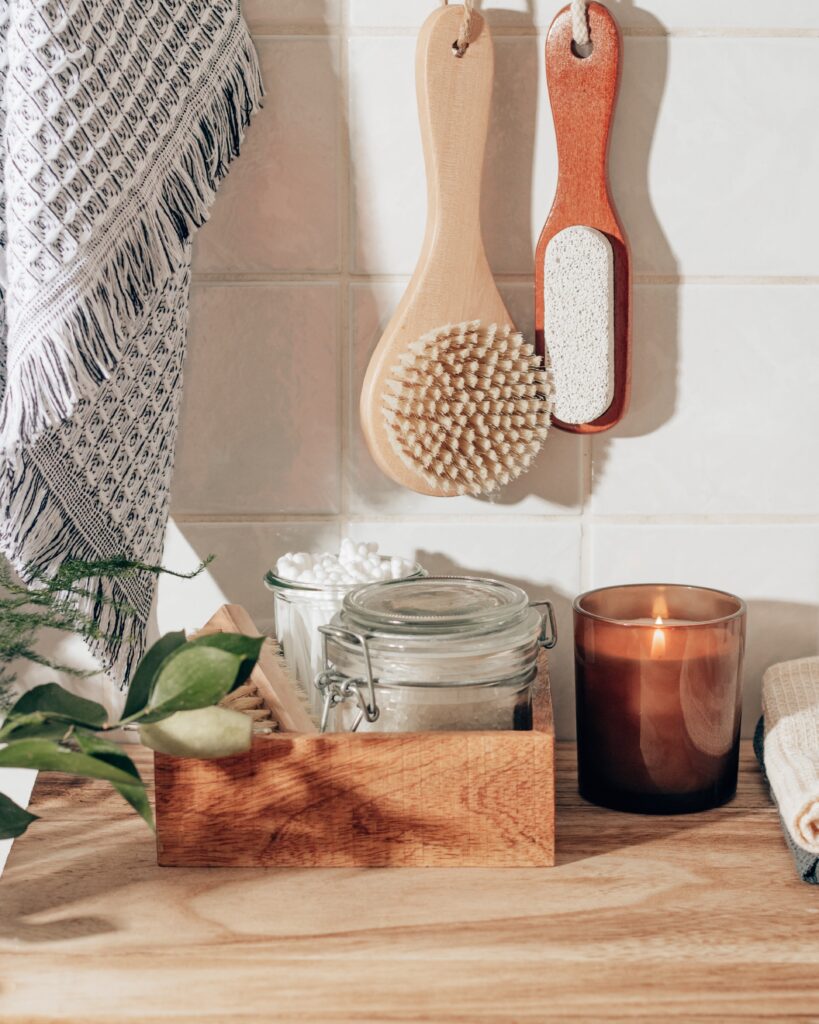Dry Brushing for Postpartum Self-Care

Postpartum life offers a myriad of emotions and experiences. As new mothers adapt to this phase, consistent self-care is crucial. Amid the challenges of the “fourth trimester,” like sleep disturbances, hormonal imbalances, and physical recovery, simple yet effective self-care practices like dry brushing can serve as rejuvenating oases, even if only for five minutes. We hope you enjoy this week’s blog as we dive deeper into dry brushing and all of its benefits.
Delving into Dry Brushing: An Ancient Practice Renewed
Dry brushing, a tradition tracing back to ancient civilizations, involves using natural bristle brushes on the skin. The benefits it offers span across various domains:
- Exfoliation: Brushing away dead skin cells reveals radiant, smooth skin.
- Circulation Boost: The gentle brushing motions enhance blood flow, promoting healthier skin and aiding other bodily functions.
- Lymphatic Support: This becomes especially vital during the postpartum phase, a period when many women face water retention and swelling due to disrupted lymphatic flow.

Lymphatic System and Dry Brushing: A Synergistic Relationship
The lymphatic system, essential for our immune responses, plays a pivotal role in eliminating toxins. Dry brushing aids in:
- Stimulating Lymph Flow: Brushing motions push the lymph through the body, aiding in toxin removal and reducing edema.
- Immunity Boost: A better-functioning lymphatic system translates to heightened immunity, critical for both mother and baby.
- Skin Health: By reducing toxin buildup, the skin’s health significantly improves, potentially combatting postpartum issues like acne breakouts.
Hormonal Regulation and Dry Brushing
The postpartum phase sees a dramatic shift in hormonal balances, impacting everything from mood to metabolism. Dry brushing can be instrumental in:
- Promoting Circulation: Enhanced blood circulation can aid in more even hormone distribution, possibly offering relief from mood swings.
- Reducing Stress: The very act of dry brushing can be calming, potentially reducing cortisol, the stress hormone.
- Supporting Thyroid Health: Regular detoxification practices like dry brushing might aid thyroid health, a critical aspect given conditions like postpartum thyroiditis. However, it’s always advised to consult a healthcare professional for any health concerns.
How to Practice Dry Brushing
To gain the most from this beneficial practice:
- Choose Your Brush: Preferably, one with natural bristles. Some brushes also come with long handles, ideal for reaching the back.
- Starting Point: Always start at the feet and brush upwards in long sweeping motions towards the heart.
- Maintain Gentle Pressure: The brushing should be firm yet never harsh. Avoid areas with broken skin or heightened sensitivity.
- Post-Brushing Ritual: Shower after brushing to wash off the exfoliated skin.
- Hydrate Your Skin: Use a moisturizer or natural oil post-shower to keep the skin soft and hydrated.
Personal Testimonials
“After my second child, I felt so overwhelmed. Then, a friend introduced me to dry brushing. Not only has my skin never felt better, but the act itself is meditative. It’s become my daily five-minute mindfulness ritual.” – Jennifer, 32
Concluding Thoughts
The postpartum journey is a complex tapestry of challenges and beauty. For the new mothers associated with ‘Bay City Doulas’ in the San Francisco Bay Area, integrating self-care techniques like dry brushing can significantly elevate their postpartum experience, blending physical rejuvenation with emotional solace.
Thank you for reading this week’s blog ” Dry Brushing For Postpartum Care.” For more tips and tricks on all things pregnancy, postpartum, and parenthood click here.

